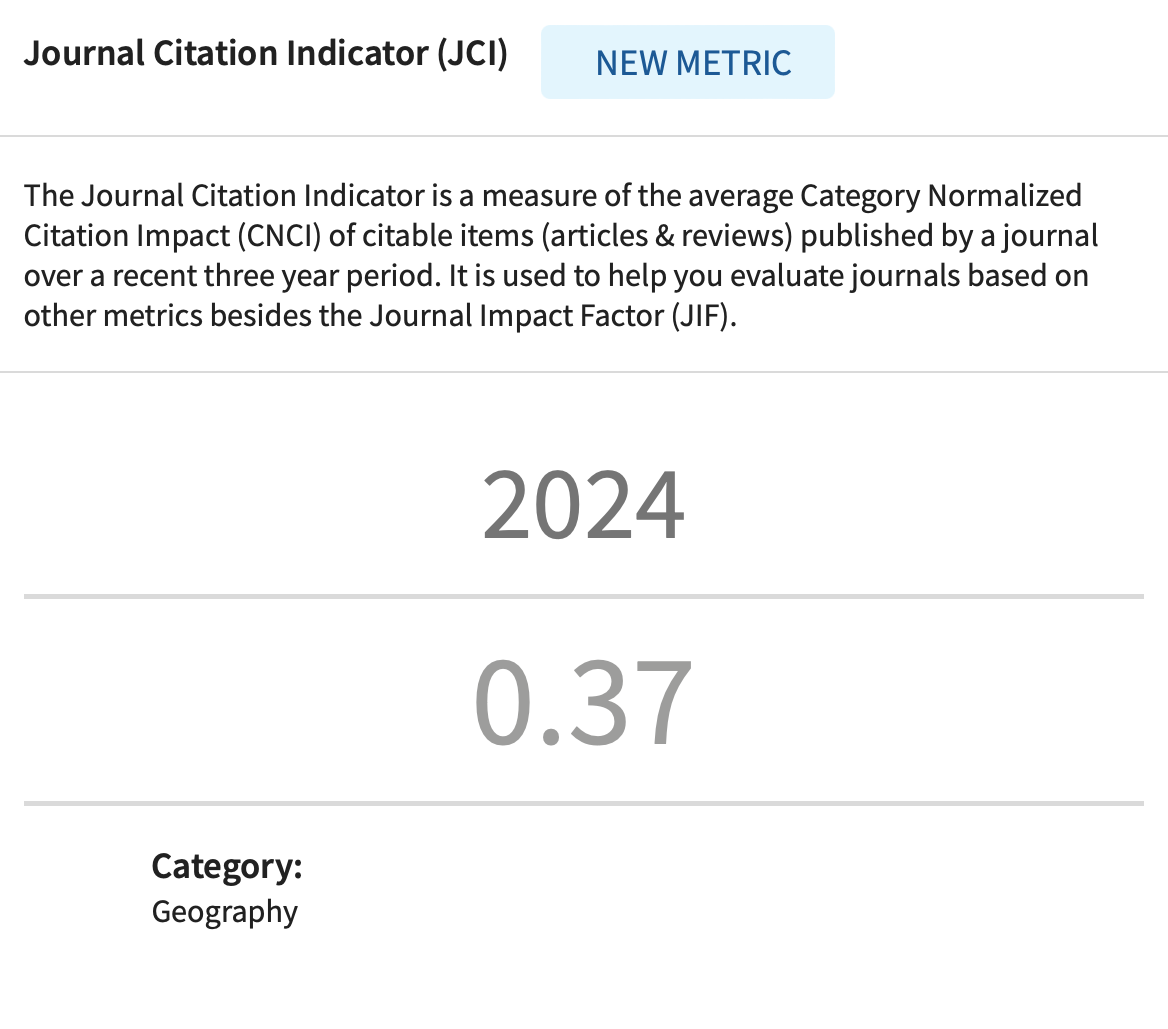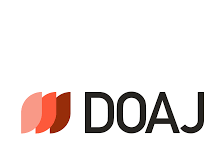ASSESSING WILDFIRE IMPACT ON VEGETATION IN PROTECTED AREAS USING THE DNBR INDEX: INSIGHTS FROM THE DESIGNATED LOCATION IN SERBIA
DOI:
https://doi.org/10.2298/IJGI250225010NKeywords:
wildfires, remote sensing, dNBR, GIS, protected areasAbstract
Wildfires represent one of the most dangerous hazards to vegetation. Although they can result from natural factors, the majority of wildfires are caused by human activity. In Serbia, most fires originate from agricultural burning and subsequently spread to forests and protected areas. This study focuses on a wildfire that occurred near the Special Nature Reserve (SNR) “Carska Bara” in October 2018. SNR “Carska Bara” is located in Vojvodina, northern Serbia. Based on Sentinel-2A satellite imagery and reflectance in the NIR and SWIR2 bands, the differenced normalized burn ratio (dNBR) index was calculated in GIS environment. The dNBR values were reclassified into five categories, where lower pixel values represent areas with lower burn severity, while higher values indicate higher intensity of wildfire. The high-severity category covers 0.09% of the SNR territory, moderate-high severity 4.91%, and moderate-low severity 7.49% of the territory. The category of low severity covers 39.13% of the territory, while unburned areas account for nearly half of SNR “Carska Bara” (48.38%). The study results highlight the significance of GIS and remote sensing in wildfire detection and damage assessment in protected areas. Effective wildfire risk reduction requires prohibition of illegal agricultural burning and implementation of early warning systems that provide timely fire alerts.
Article metrics
References
Aksoy, E., & Selim, S. (2024). Burned Forest Area Detection in the Manavgat Forest Fire Using NBR and dNBR Indice. Journal of International Architectural Sciences, 1(1), 1–11. https://doi.org/10.5281/zenodo.14563064
Chicas, S. D., Nielsen, J. Ø., Valdez, M. C., & Chen, C. (2022). Modelling wildfire susceptibility in Belize’s ecosystems and protected areas using machine learning and knowledge-based methods. Geocarto International, 37(27), 15823–15846. https://doi.org/10.1080/10106049.2022.2102231
Copernicus Programme. (n.d.). Sentinel-2 Mission. https://sentiwiki.copernicus.eu/web/s2-mission
Dos Santos, J. F. C., Romeiro, J. M. N., de Assis, J. B., Torres, F. T. P., & Gleriani, J. M. (2018). Potentials and limitations of remote fire monitoring in protected areas. Science of The Total Environment, 616-617, 1347–1355. https://doi.org/10.1016/j.scitotenv.2017.10.182
Escuin, S., Navarro, R., & Fernández, P. (2007). Fire severity assessment by using NBR (Normalized Burn Ratio) and NDVI (Normalized Difference Vegetation Index) derived from LANDSAT TM/ETM images. International Journal of Remote Sensing, 29(4), 1053–1073. https://doi.org/10.1080/01431160701281072
Gajović, V., & Todorović, B. (2013). Spatial and Temporal Analysis of Fires in Serbia for Period 2000-2013. Journal of the Geographical Institute “Jovan Cvijić” SASA, 63(3), 297–312. https://doi.org/10.2298/ijgi1303297g
García, M. J. L., & Caselles, V. (1991). Mapping burns and natural reforestation using thematic Mapper data. Geocarto International, 6(1), 31–37. https://doi.org/10.1080/10106049109354290
Gonçalves, J., De Castro, E., Loureiro, F., & Pereira, P. (2024). Assessment of forest fires impacts on geoheritage: A study in the Estrela UNESCO Global Geopark, Portugal. International Journal of Geoheritage and Parks, 12(4), 580–605. https://doi.org/10.1016/j.ijgeop.2024.11.005
Henry, M. C., & Maingi, J. K. (2024). Evaluating Landsat- and Sentinel-2-Derived Burn Indices to Map Burn Scars in Chyulu Hills, Kenya. Fire, 7(12), Article 472. https://doi.org/10.3390/fire7120472
Hoyland, R. O., McHenry, M. T., & Foster, E. A. (2024). Fire and geodiversity. International Journal of Wildland Fire, 33(4), Article WF23134. https://doi.org/10.1071/wf23134
Jakovljević, T., & Đurđić, S. (2024). Application of multispectral imaging in forest monitoring: A case study of national parks in Republic of Serbia. Zbornik Radova - Geografski fakultet Univerziteta u Beogradu, 72, 113–134. https://doi.org/10.5937/zrgfub2472113j
Jovanović, N., & Župan, R. (2017). Analiza stanja vegetacije prije i nakon šumskih požara pomoću satelitskih snimaka Sentinel-2 na području Dalmacije [Analysis of Vegetation Condition before and after Forest Fires in Dalmatia using Sentinel-2 Satellite Images]. Geodetski list, 3, 233–248. https://hrcak.srce.hr/189743
JP Zavod za urbanizam Vojvodine. (2023). Prostorni plan područja posebne namene Specijalnog rezervata prirode “Carska bara” [Spatial Plan of the Special Purpose Area of the Special Nature Reserve “Carska bara”]. Pokrajinski sekreterijat za urbanizam i zaštitu životne sredine. https://drive.google.com/file/d/12l4oxYE_6oQFQvWYyGQfx_gzb3YFTUkE/view
Key, C. H., & Benson, N. C. (2006). Landscape Assessment: Ground measure of severity, the Composite Burn Index; and Remote sensing of severity, the Normalized Burn Ratio. USDA Forest Service, Rocky Mountain Research Station. https://pubs.usgs.gov/publication/2002085
Kurbanov, E., Vorobev, O., Lezhnin, S., Sha, J., Wang, J., Li, X., Cole, J., Dergunov, D., & Wang, Y. (2022). Remote Sensing of Forest Burnt Area, Burn Severity, and Post-Fire Recovery: A Review. Remote Sensing, 14(19), Article 4714. https://doi.org/10.3390/rs14194714
Lewis, S. A., Robichaud, P. R., Hudak, A. T., Strand, E. K., Eitel, J. U. H., & Brown, R. E. (2021). Evaluating the Persistence of Post-Wildfire Ash: A Multi-Platform Spatiotemporal Analysis. Fire, 4(4), Article 68. https://doi.org/10.3390/fire4040068
Mashhadi, N., & Alganci, U. (2021). Determination of Forest Burn Scar and Burn Severity from Free Satellite Images: a Comparative Evaluation of Spectral Indices and Machine Learning Classifiers. International Journal of Environment and Geoinformatics, 8(4), 488–497. https://doi.org/10.30897/ijegeo.879669
Mrkša, M., & Milanović, M. (2007). Analysis of environment elements in specific reservation of nature Stari Begej: Carska bara and principles of protection. Glasnik Srpskog geografskog društva, 87(2), 241–245. https://doi.org/10.2298/gsgd0702241m
Nikolić, N. (2024). GIS analiza podložnosti pojavi šumskih požara u opštini Kladovo, Srbija [GIS Analysis of Forest Fire Susceptibility in Kladovo Municipality, Serbia]. In V. Knežević (Ed.), Proceedings: Natural Sciences: 17th scientific conference Students encountering science – StES 2024 (pp. 159–167). Univerzitet u Banja Luci. https://drive.google.com/file/d/1kD5U5kQ-J7tj2YNrd-5wfebdwLD0-o_w/view?usp=drive_link
Novkovic, I., Markovic, G. B., Lukic, D., Dragicevic, S., Milosevic, M., Djurdjic, S., Samardzic, I., Lezaic, T., & Tadic, M. (2021). GIS-Based Forest Fire Susceptibility Zonation with IoT Sensor Network Support, Case Study—Nature Park Golija, Serbia. Sensors, 21(19), Article 6520. https://doi.org/10.3390/s21196520
Pausas, J. G., & Vallejo, V. R. (1999). The role of fire in European Mediterranean ecosystems. In E. Chuvieco (Ed.), Remote Sensing of Large Wildfires (pp. 3–16). Springer. https://doi.org/10.1007/978-3-642-60164-4_2
Ponomarev, E., Zabrodin, A., & Ponomareva, T. (2022). Classification of Fire Damage to Boreal Forests of Siberia in 2021 Based on the dNBR Index. Fire, 5(1), Article 19. https://doi.org/10.3390/fire5010019
Potić, I. M., Ćurčić, N. B., Potić, M. M., Radovanović, M. M., & Tretiakova, T. N. (2017). Remote Sensing Role in Environmental Stress Analysis: Еаst Serbia Wildfires Case Study (2007–2017). Journal of the Geographical Institute “Jovan Cvijić” SASA, 67(3), 249–264. https://doi.org/10.2298/ijgi1703249p
Santos, S. M. B. d., Bento-Gonçalves, A., Franca-Rocha, W., & Baptista, G. (2020). Assessment of Burned Forest Area Severity and Postfire Regrowth in Chapada Diamantina National Park (Bahia, Brazil) Using dNBR and RdNBR Spectral Indices. Geosciences, 10(3), Article 106. https://doi.org/10.3390/geosciences10030106
UN Environment Programme World Conservation Monitoring Centre, & International Union for Conservation of Nature. (2025). Protected Planet: The World Database on Protected Areas (WDPA) [Data set]. https://doi.org/10.34892/6fwd-af11
Uredba o proglašenju Specijalnog rezervata prirode “Carska bara” [Decree on the Proclamation of the Special Nature Reserve “Carska Bara”], Službeni glasnik Republike Srbije br. 46 (2011); 96 (2021).
Vranić, P., & Mišić, N. (2024). Spatial Distribution Patterns of Wild-Fires Incidents in Serbia Based on VIIRS 375 m Data for the Period 2013-2023. Facta Universitatis Series Working and Living Environmental Protection, 21(2), 87–96. https://doi.org/10.22190/fuwlep240605008v
Vujović, F., & Nikolić, G. (2022). Geospatial assessment of vegetation condition pre-wildfire and post-wildfire on Luštica (Montenegro) using differenced Normalized Burn Ratio (dNBR) index. Bulletin of Natural Sciences Research, 12(2), 14–19. https://doi.org/10.5937/bnsr12-39990
Yu, Y., & Ginoux, P. (2022). Enhanced dust emission following large wildfires due to vegetation disturbance. Nature Geoscience, 15, 878–884. https://doi.org/10.1038/s41561-022-01046-6
Živić, P. (2018, October 17). Požar u rezervatu prirode Carska bara: Šta smo izgubili [Fire in the Carska Bara Nature Reserve: What have we lost]. BBC News na srpskom. https://www.bbc.com/serbian/lat/srbija-45882141
Downloads
Published
How to Cite
Issue
Section
License
Copyright (c) 2025 Journal of the Geographical Institute “Jovan Cvijić” SASA

This work is licensed under a Creative Commons Attribution 4.0 International License.











